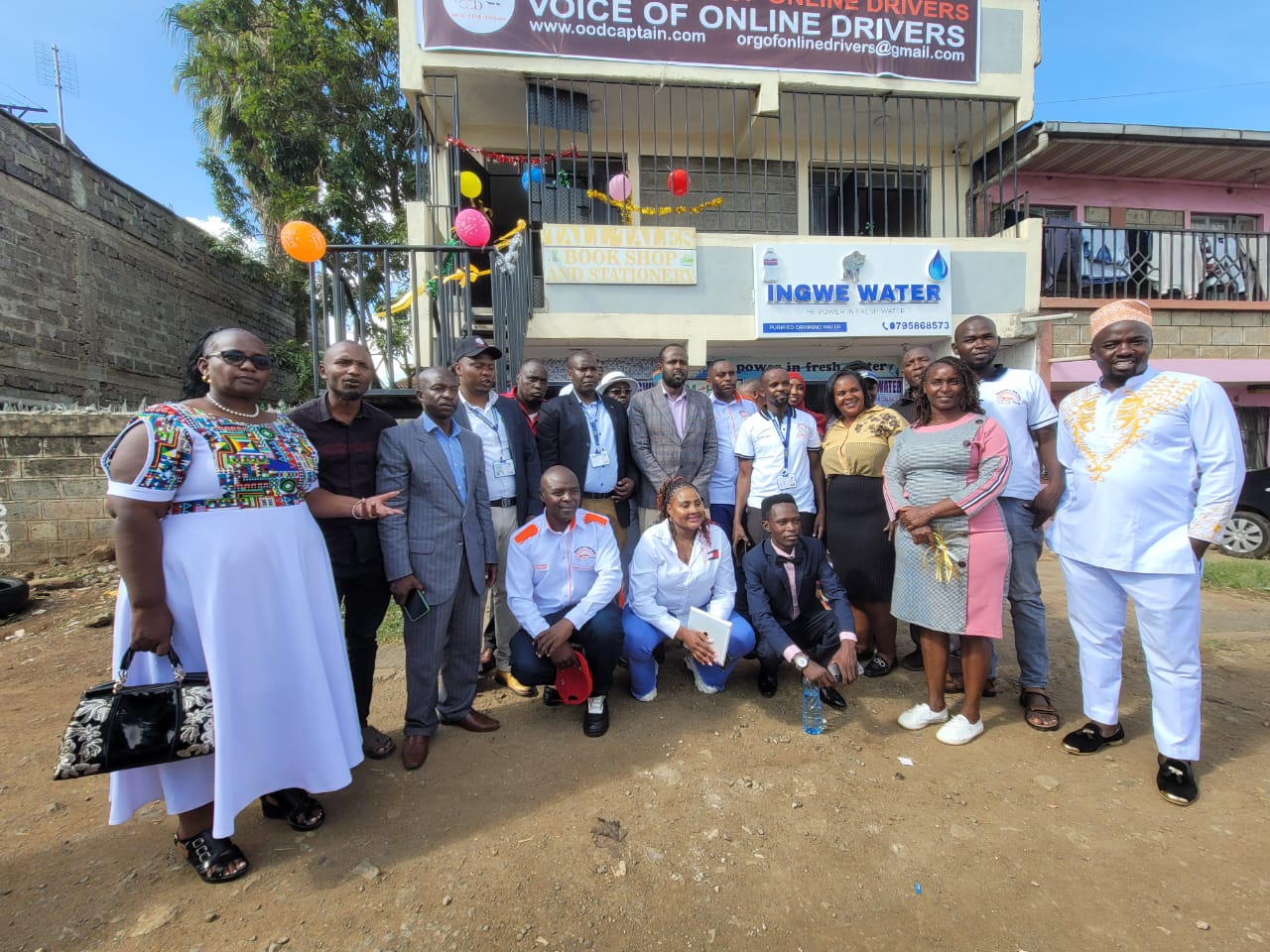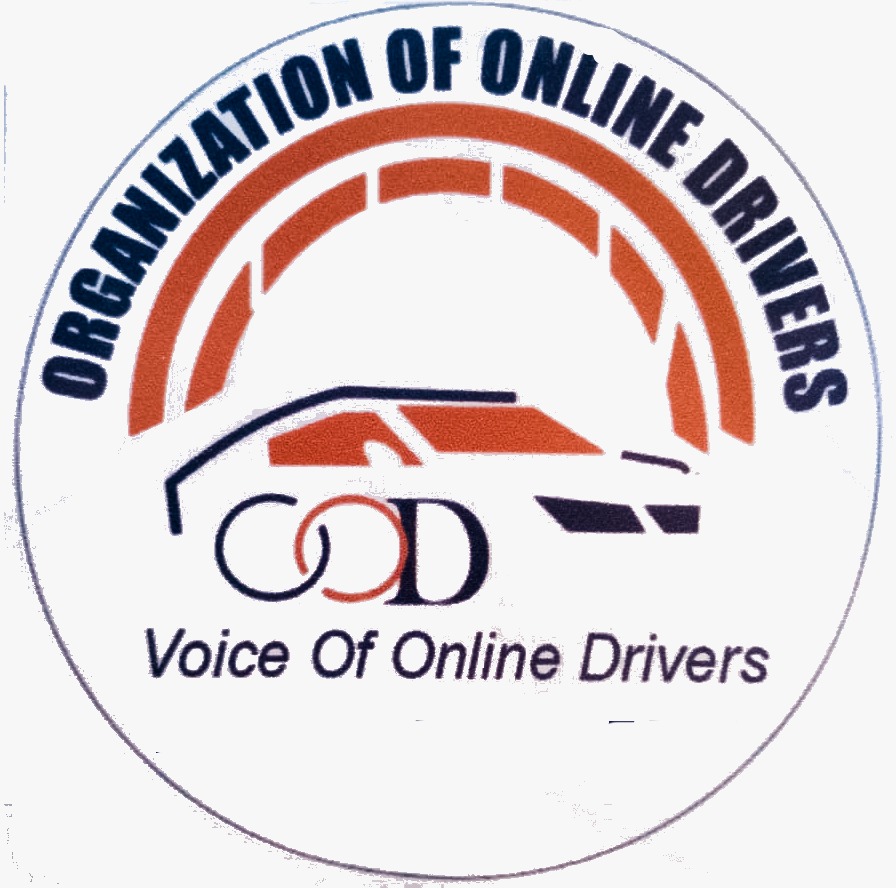
Empowering Drivers Together
Uniting Kenya’s drivers with innovative solutions, seamless connections, and unmatched reliability.
Driving Success Together: Our Journey
ORGANIZATION OF ONLINE DRIVERS (K), a key player in Kenya’s transport sector, is based in the bustling city of Nairobi. With a robust membership of 19,000 online drivers, we offer efficient and dependable online taxi services through leading app platforms across the nation.
Our Dedicated Driver Team
Meet our experienced team of transport experts offering over 5 years of combined knowledge for exceptional service.

Justin Njeru Nyagah
Overall Chairman

Dennis Nyariki
Deputy Chairman

Kevin Odongo
Operations Coordinator

Samuel M.Thuranira
overall Secretary

Henry Mwangi
Organizer Secretary

David Muigai
Treasure

Stephen Ndonga
I.C.T manager

Titi NJeri
women Rep
What Members Say
At ORGANIZATION OF ONLINE DRIVERS (K), we are delighted to support our 19,000 members across Kenya. Here are their thoughts on our supportive community and opportunities.
ORGANIZATION OF ONLINE DRIVERS (K) transformed my online taxi business. Highly recommended!
Fridah Gatwiri
Independent Driver

Appreciate the collaborative environment and resources provided. Truly outstanding support!

Flexible Achieng
driver
Empowering drivers with great support and community spirit. A key ally for success!

SPACE TAXI
Dr Manager
Flexible resources and exceptional assistance. ORGANIZATION OF ONLINE DRIVERS (K) surpassed my expectations!

Kipngeno Patrick
Driver
Enhance Your Ride Experience with ORGANIZATION OF ONLINE DRIVERS (K)
Take the first step towards transforming your transportation services with ORGANIZATION OF ONLINE DRIVERS (K). Our dedicated team and innovative platforms will ensure a smooth and effective ride experience. Contact us today to explore your specific needs and discover how we can elevate your journey.

The organization of online drivers involves several key components that ensure efficient and effective service delivery. Here are some aspects that typically define how online drivers are organized:
- Platform Structure: Online driving services are often structured around a centralized platform or app that connects drivers with passengers. This platform manages bookings, payments, and communication.
- Driver Registration: Drivers must go through a registration process that usually involves background checks, vehicle inspections, and licensing verifications to ensure safety and reliability.
- Training and Guidelines: Many platforms provide training materials or sessions to ensure drivers understand the service standards, customer service expectations, and use of the app.
- Scheduling and Availability: Drivers can often choose their own schedules, allowing flexibility. The platform may offer peak time incentives to encourage availability during high-demand periods.
- Rating and Feedback System: Both drivers and passengers typically have the opportunity to rate each other. This system helps maintain quality and provides accountability.
- Support and Communication: A robust support system is crucial for addressing issues that arise, whether they are technical, safety-related, or customer service-oriented.
- Payment and Incentives: Drivers are usually compensated through a combination of base fares, distance traveled, and time spent. Bonuses and incentives may be offered for completing a certain number of rides or working during peak times.
- Community and Networking: Some platforms encourage community building among drivers through forums, meet-ups, or social media groups, providing an avenue for support and sharing experiences.
By organizing with these components, online driving services can efficiently meet the needs of both drivers and passengers while maintaining high standards of service.
Introduction:
The rise of digital platforms has revolutionized the transportation industry, giving birth to a new category of workers: online drivers. These drivers, using apps like Uber, Lyft, and others, have become an integral part of urban mobility. Understanding how these drivers are organized, both formally and informally, is essential to grasp the dynamics of the modern gig economy.
Title: The Organization of Online Drivers
Structure:
- Digital Platforms: Online drivers primarily operate through digital platforms that act as intermediaries between the drivers and customers. These platforms provide the necessary tools for drivers to connect with riders, establish routes, and manage payments.
- Flexible Workforce: Online driving offers flexibility, allowing drivers to work on their schedules. This flexibility attracts a diverse workforce, including part-time workers, retirees, and those seeking supplementary income.
- Independent Contractors: Most online drivers are categorized as independent contractors rather than employees. This classification affects their rights, benefits, and responsibilities, leading to ongoing debates about labor rights and protections.
- Driver Communities: Despite working independently, drivers often form informal communities, both online and offline. These communities provide support, share information, and advocate for better working conditions and policies.
- Regulations and Policies: The organization of online drivers is also influenced by local government regulations. These can impact licensing, insurance requirements, and operational areas, shaping how drivers conduct their business.
- Technology and Data: Technology plays a crucial role in the organization of online drivers. GPS systems, data analytics, and customer feedback mechanisms help drivers improve efficiency and service quality.
Conclusion:
The organization of online drivers is a complex and evolving aspect of the gig economy. Balancing the flexibility and independence desired by drivers with the need for fair labor practices and regulations remains a key challenge for the industry. As digital platforms continue to grow, understanding and improving the organization of online drivers will be crucial for sustainable development in the transportation sector.
